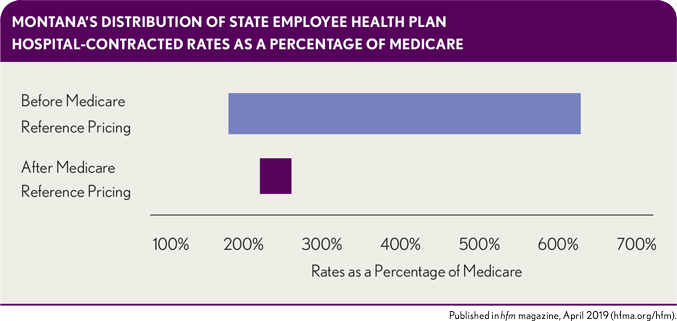Montana’s dive into Medicare reference pricing reduces provider payments by almost $16 million annually
Montana implemented its Medicare reference pricing model for hospital (inpatient and outpatient) services provided to its employees in 2016. The state’s decision to adopt the model was prompted by payment variances for hospital services delivered to state employees, ranging from 191% to more than 600% of Medicare. The new contracts, which were individually negotiated with each hospital, did not apply to the state’s critical access hospitals. The contracts reduced variation but did not “standardize” payment rates and will be phased in over multiple years. Payment for services under the new contracts range from 230% to 250% of Medicare rates. Although the state is paying more for some services (e.g. labor and delivery, psychiatric care), overall it is saving $15.6 million annually.

Despite Montana’s emphasis on transparency, the state has not made publicly available how it defines the Medicare rate it uses in each contract as the basis for the reference price.
Some providers have negotiated their reference-priced contracts to include traditional add-on payments (e.g., disproportionate share hospital and indirect medical education payments) and adjustments for Medicare’s quality payment programs (e.g., Hospital-Acquired Condition Reduction Program, Hospital Value-Based Payment Program and Hospital Readmissions Reduction Program). Pass-through payments (e.g., allowable bad debt, transplant costs and Direct Graduate Medical Education payments) and the Medicare sequester are not incorporated into the contract. Outpatient services provided in hospital-based clinics are paid at the “freestanding” rate. Payment rates under the contract are adjusted annually based on the Medicare update. Although this rate is lower than the rate of input price inflation, some providers say it is better than the inflationary update they received from the state under prior contracts.





